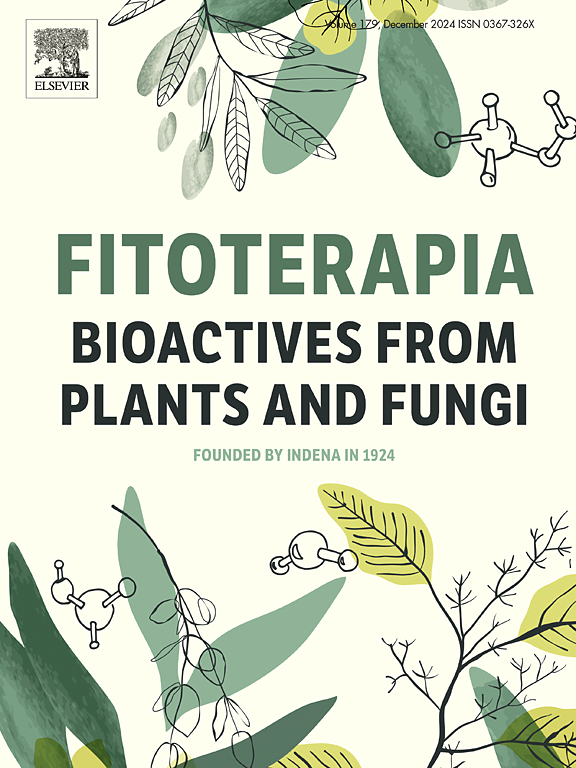Biotransformation of oleanonic acid from jujube by food fermentation fungus Actinomucor elegans and the potential anti-neuroinflammatory properties of metabolites
IF 2.6
3区 医学
Q3 CHEMISTRY, MEDICINAL
引用次数: 0
Abstract
This study investigated the biotransformation of oleanonic acid (1), a major bioactive constituent of jujube, using Actinomucor elegans, a filamentous fungus commonly employed in food fermentation. The process yielded 12 previously undescribed metabolites (compounds 4, 5, 7, 10, 11, and 14–20), along with seven known compounds. Structural elucidation of these metabolites was conducted through comprehensive spectroscopic analyses. The anti-neuroinflammatory activities of these metabolites were investigated by assessing their ability to inhibit nitric oxide (NO) production in BV-2 microglial cells stimulated by lipopolysaccharide (LPS). Notably, compounds 4, 5, 10, and 13 exhibited greater inhibitory activity compared to oleanonic acid. Among them, compound 10 demonstrated remarkable efficacy, significantly reducing the transcription levels of inflammation-associated factors, including IL-6, IL-1β, COX-2, and TNF-α. Furthermore, compound 10 enhanced autophagy activation by upregulating the expression of Beclin 1 and LC3 II at the protein level, underscoring its possible inflammation-reducing effects.

食品发酵真菌对枣中齐墩果酸的生物转化及其代谢产物的潜在抗神经炎症特性
本研究利用一种常用于食品发酵的丝状真菌——秀丽放线菌(Actinomucor elegans),研究了枣中主要生物活性成分齐奥果酸(1)的生物转化。该过程产生了12种先前未描述的代谢物(化合物4,5,7,10,11和14-20),以及7种已知化合物。这些代谢物的结构解析是通过全面的光谱分析进行的。通过评估这些代谢物抑制脂多糖(LPS)刺激下BV-2小胶质细胞一氧化氮(NO)产生的能力,研究了这些代谢物的抗神经炎活性。值得注意的是,化合物4、5、10和13比齐墩果酸表现出更强的抑制活性。其中,化合物10疗效显著,可显著降低炎症相关因子IL-6、IL-1β、COX-2、TNF-α的转录水平。此外,化合物10通过在蛋白水平上调Beclin 1和LC3 II的表达,增强自噬激活,强调其可能的炎症减轻作用。
本文章由计算机程序翻译,如有差异,请以英文原文为准。
求助全文
约1分钟内获得全文
求助全文
来源期刊

Fitoterapia
医学-药学
CiteScore
5.80
自引率
2.90%
发文量
198
审稿时长
1.5 months
期刊介绍:
Fitoterapia is a Journal dedicated to medicinal plants and to bioactive natural products of plant origin. It publishes original contributions in seven major areas:
1. Characterization of active ingredients of medicinal plants
2. Development of standardization method for bioactive plant extracts and natural products
3. Identification of bioactivity in plant extracts
4. Identification of targets and mechanism of activity of plant extracts
5. Production and genomic characterization of medicinal plants biomass
6. Chemistry and biochemistry of bioactive natural products of plant origin
7. Critical reviews of the historical, clinical and legal status of medicinal plants, and accounts on topical issues.
 求助内容:
求助内容: 应助结果提醒方式:
应助结果提醒方式:


